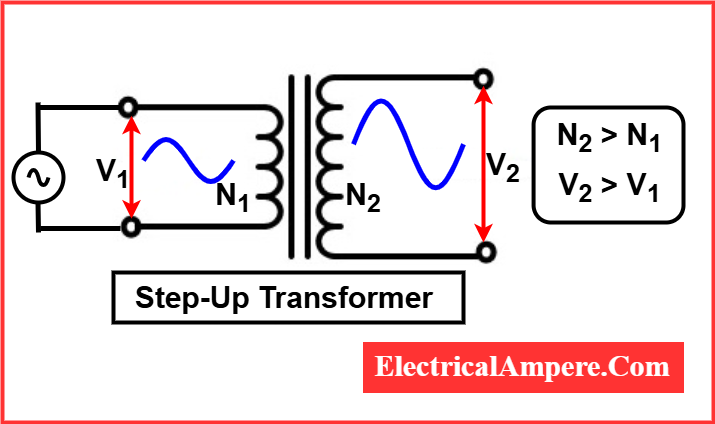The key difference between step up and step down transformer lies in their voltage conversion — a step-up transformer increases the output voltage, whereas a step-down transformer decreases it.
Transformers are essential in managing voltage levels across power systems. Among them, step-up and step-down transformers are the most widely used. While both operate on the principle of electromagnetic induction, they serve opposite functions.
What Does a Step-Up Transformer Do?
step-up transformers( voltage boosters) elevate output voltage by using more turns in the secondary coil than the primary, enabling efficient long-distance power delivery.
These voltage-boosting units are typically installed at power generation stations—including solar farms, hydro plants, or thermal units—where medium voltage (e.g., 11 kV) is raised to higher levels (e.g., 66 kV or above).
This increase in voltage reduces current, minimizing I²R losses during transmission. It also allows for the use of smaller conductors, lowering material costs across the grid.
For example, a transformer in a solar farm may boost11 kV output to 66 kV, allowing the generated power to travel long distances via high-voltage transmission lines.

For a step-up transformer, the relationships are:
- N2 > N1 – Secondary winding has more turns than the primary
- V2 > V1 – Output voltage is greater than input voltage
- I2 < I1 – Output current is less than input current
How Step-Down Transformers Reduce Voltage
step-down transformers (voltage-reducing units) decrease voltage on the output side by using fewer secondary coil turns than the primary. It is widely used to supply power to homes and devices that operate at lower voltages.
These transformers are positioned at the receiving end of the power system—often inside buildings or local substations—to reduce incoming high-voltage power (e.g., 11 kV or 33 kV) to safer levels such as 230 V or 110 V.
Apart from lowering voltage, voltage-reducing units also enhance electrical safety and equipment reliability by preventing overvoltage damage and matching supply with device ratings.

For a step-down transformer, the relationships are:
- N2 < N1 – Secondary winding has fewer turns than the primary
- V2 < V1 – Output voltage is less than input voltage
- I2 > I1 – Output current is greater than input current
Step-Up vs Step-Down Transformers: Key Differences
Here’s a comparison table to help you quickly understand the core differences:
| Aspect | Step-Up Transformer | Step-Down Transformer |
| Purpose | Used to raise the voltage from a lower input level to a higher output level | Used to bring down voltage from a higher input level to a lower output level |
| Voltage Levels | Takes in low voltage and delivers high voltage | Takes in high voltage and delivers low voltage |
| Winding Configuration | Secondary winding has more turns and handles higher voltage | Primary winding has more turns and handles higher voltage |
| Current Characteristics | Secondary side carries reduced current | Secondary side carries increased current |
| Typical Output Ratings | Often outputs 11kV or higher depending on use | Common outputs include 110V, 24V, 12V, etc. |
| Conductor Thickness | Thicker copper winding on the low voltage (input) side | Thicker copper winding on the output side |
| Common Uses | Used in power generation stations, medical imaging, and industrial equipment | Used in domestic appliances, bell circuits, and small electronic devices |
| Turn Ratio | More turns on the secondary coil than the primary | Fewer turns on the secondary coil than the primary |
| Voltage Example | Converts 440V to 11kV | Converts 230V to 12V |
Where Step-Up Transformers Are Used
- Transmission lines from power stations
- Solar or wind power integration
- High-voltage grid systems
Common Uses of Step-Down Transformers
- Power supply to homes and offices
- Electronic device chargers
- Low-voltage industrial machinery
Final Thoughts
When selecting between the two, it comes down to your voltage needs:
- Need to transmit power over long distances? Go with a step-up transformer.
- Need to safely use electricity in homes or machines? Go with a step-down transformer.
Related Articles: